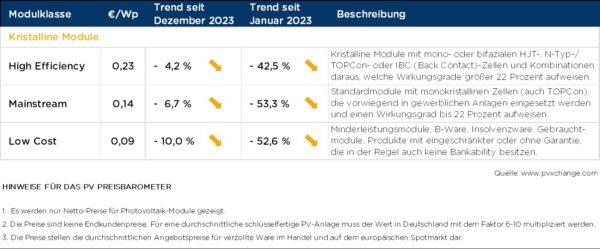From pv magazine Germany
The prices of solar modules in all technological classes were lowered slightly again at the end of 2023. This is probably the last time this will happen over the long term and only affects in-stock items already in Europe.
PV modules that first have to be shipped or are still traveling by sea are already being offered by many suppliers at prices that are between €0.01 ($0.01)/W and €0.02/W higher. The reason is ongoing tensions in the Red Sea and the Gulf of Aden. Houthi militants have been attacking merchant ships there for weeks, preventing them from entering the Red Sea and transiting through the Suez Canal. Many shipping companies will avoid the region – the key trade route between Europe and Asia – until the conflict, which is related to the Israel-Hamas war in the Gaza Strip, is resolved.
The alternative route circles the southern tip of Africa and is about 6,000 kilometers longer. The costs of transporting a container from China to Rotterdam have already almost tripled. The fact that module prices have not risen further is only due to the fact that demand remains somewhat contained at the moment.
In Germany and central and northern Europe, lower demand is mainly due to the ongoing cold wave and the uncertain political situation in some countries. In Poland, for example, the newly elected government of Prime Minister Donald Tusk has not yet become operational due to continuous interruptions and protests by members and supporters of the old government.
If we look back at the forecasts for 2023, expectations for a drop in PV component prices starting in the second half of the year have been fulfilled. In the case of modules, the price decline has been even faster and more severe than even experts could have imagined. Thanks to the fall in the costs of PV installations, high installation figures were also achieved in the second half, especially in the small installations sector in Germany, although demand had decreased significantly compared to the previous year.
At least in the first three quarters, the backlog that still existed for many installers was cleared. Overall, construction of new PV capacity in Germany increased by almost 100%, from 7.5 GW to more than 14 GW.
Meanwhile, the long-awaited reduction in bureaucracy announced by German politicians, especially for the construction of larger PV parks, has not yet materialized, which has somewhat slowed down new construction in the commercial and utility sectors. The rapid drop in module prices has also caused a wait-and-see attitude, and the completion of some projects has been postponed to the future. There is currently little talk of a bottleneck in the installation market, but old problems could resurface at the end of the year, as soon as the market recovers.
Many offers from last year currently have to be adjusted downwards, as PV components have become cheaper and competition has intensified. Even for small- and medium-sized complete installations, not all excessively high prices should be accepted uncritically and without negotiating the price.
The improvements in favor of an accelerated expansion of renewable energies that the ruling coalition government has long expected in Germany are summarized in the so-called “Solarpaket 1,” which should have been approved at the end of 2023. However, it was postponed until the current year due to the budget debate, with the exception of three new regulations that mainly affect wind energy.
If the amendments to the law as presented are approved at the end of January, capacity will increase. The regulations provide for the granting of the right to lay cables (landowners must grant operators of renewable energy systems a right of way if necessary to be able to lay a connection cable from the system to the connection point to the network), priority will be given to the construction of ground-mounted systems in disadvantaged areas, so that less high-quality arable land has to be used. The category “special solar installations” will include floating PV, photovoltaics on wasteland sites, parking lots, agricultural photovoltaics. Repowering for self-consumption on rooftops will be allowed beyond technical defects or damage to the modules.
With component prices currently at historic lows, this opens up considerable additional sales potential for suppliers.

The views and opinions expressed in this article are the author’s own, and do not necessarily reflect those held by pv magazine.
This content is protected by copyright and may not be reused. If you want to cooperate with us and would like to reuse some of our content, please contact: editors@pv-magazine.com.








By submitting this form you agree to pv magazine using your data for the purposes of publishing your comment.
Your personal data will only be disclosed or otherwise transmitted to third parties for the purposes of spam filtering or if this is necessary for technical maintenance of the website. Any other transfer to third parties will not take place unless this is justified on the basis of applicable data protection regulations or if pv magazine is legally obliged to do so.
You may revoke this consent at any time with effect for the future, in which case your personal data will be deleted immediately. Otherwise, your data will be deleted if pv magazine has processed your request or the purpose of data storage is fulfilled.
Further information on data privacy can be found in our Data Protection Policy.